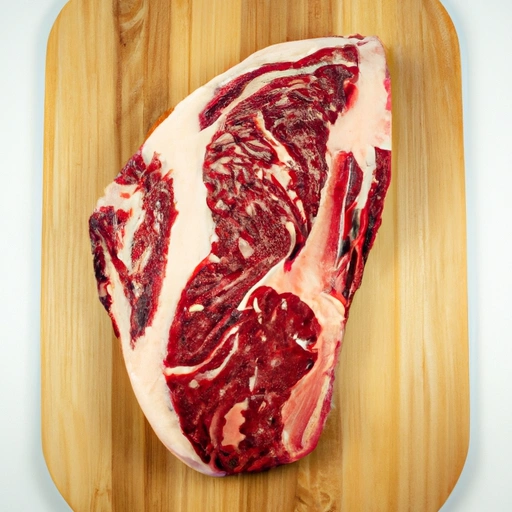Rib Eye
Description

The rib eye, also known as ribeye, is a prime cut of beef from the rib section. Renowned for its marbling, tenderness, and flavor, it's a favorite among steak enthusiasts. Rib eyes can be bone-in, known as a rib steak, or boneless. When cut into steaks, rib eye is typically ¾ to 1½ inches thick (about 2 to 4 cm), weighing between 9 to 12 ounces (255 to 340 grams) but can be found in larger sizes. In American units, it's often measured in ounces, while European recipes may refer to grams and kilos.
Common uses
Rib eye steaks are most commonly used for grilling, pan-searing, and roasting to achieve a succulent, flavorful dish. It's a versatile cut that's also popular for stir-frying and kebabs when sliced into strips or cubes.
Nutritional value
Calories
A typical 3-ounce (85 grams) cooked serving of rib eye contains approximately 207 calories.
Protein
This serving size provides about 23 grams of protein, essential for muscle building and repair.
Fat
Rib eye is known for its high fat content, with around 13 grams of total fat and 5 grams of saturated fat per serving.
Carbohydrates
It contains virtually no carbohydrates, making it a low-carb food choice.
Vitamins
Rib eye is a good source of vitamins such as B12, which is crucial for nerve health and metabolism.
Minerals
It also provides minerals like zinc, important for immune function, and iron, which is vital for blood production.
Health benefits
The high protein content in rib eye aids in muscle maintenance and growth, while the iron helps in preventing anemia. The presence of B vitamins supports various metabolic processes.
Potential risks
Due to its high saturated fat content, excessive consumption of rib eye may increase the risk of heart disease. It's recommended to enjoy this cut in moderation as part of a balanced diet.
Common recipes
Rib eye steaks are often served simply seasoned with salt and pepper, but they can also be marinated or rubbed with a variety of spices. They're a staple in steakhouse menus and are equally popular for home cooking.
Cooking methods
Popular cooking methods include grilling over high heat, pan-searing in a heavy skillet, and oven-roasting. The goal is to create a flavorful crust while keeping the inside juicy and tender.
Pairing with other ingredients
Common pairings with rib eye include roasted or mashed potatoes, steamed vegetables, bold red wines, and creamy sauces like béarnaise or peppercorn.
Summary
The rib eye is a premium beef cut known for its rich flavor and tender texture. It's enjoyed around the world in various forms, from grilled steaks to hearty roasts. While it offers high-quality protein and important nutrients, its high fat content calls for mindful consumption. When cooked correctly, rib eye delivers a luxurious eating experience that's hard to surpass.